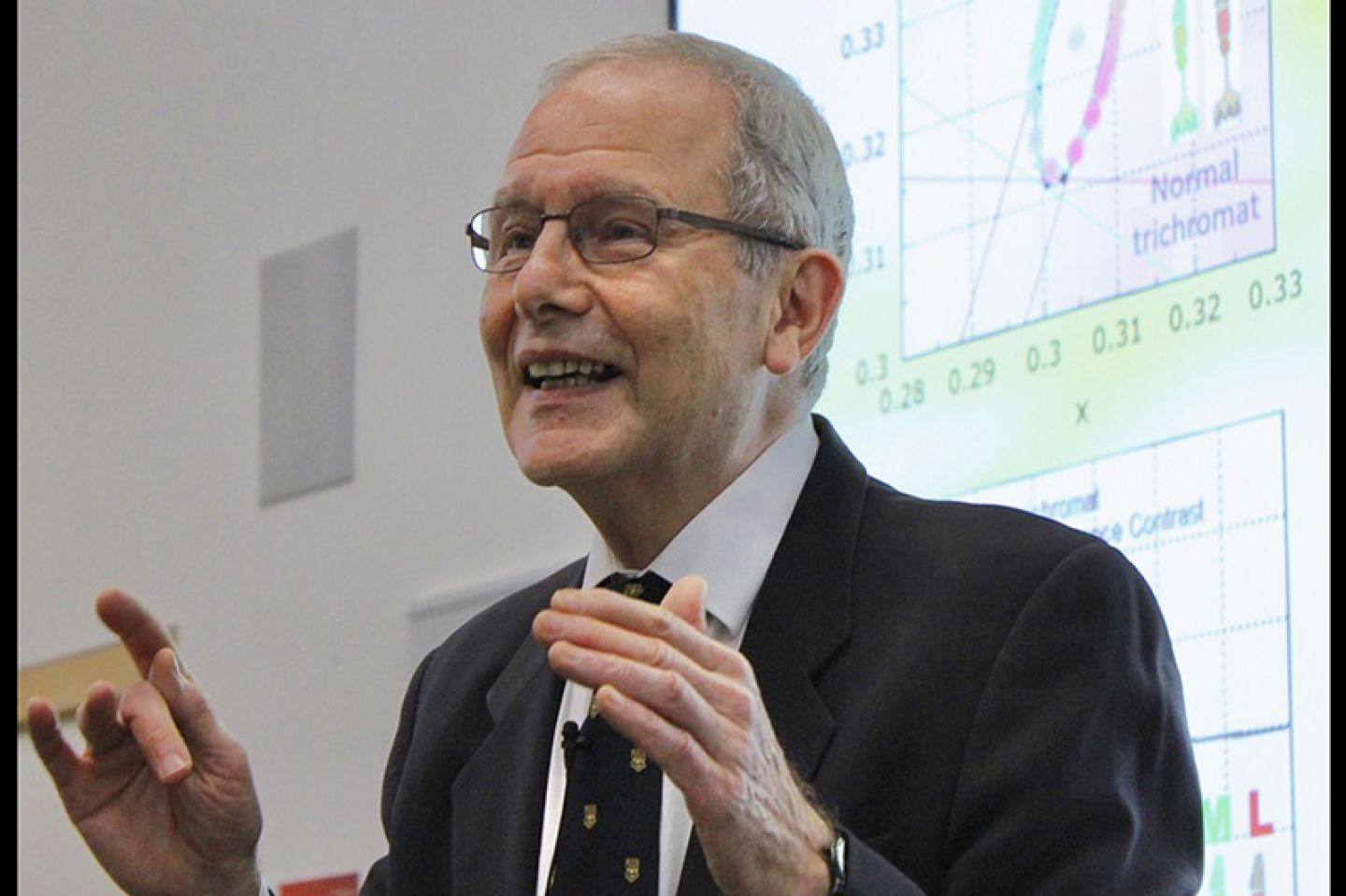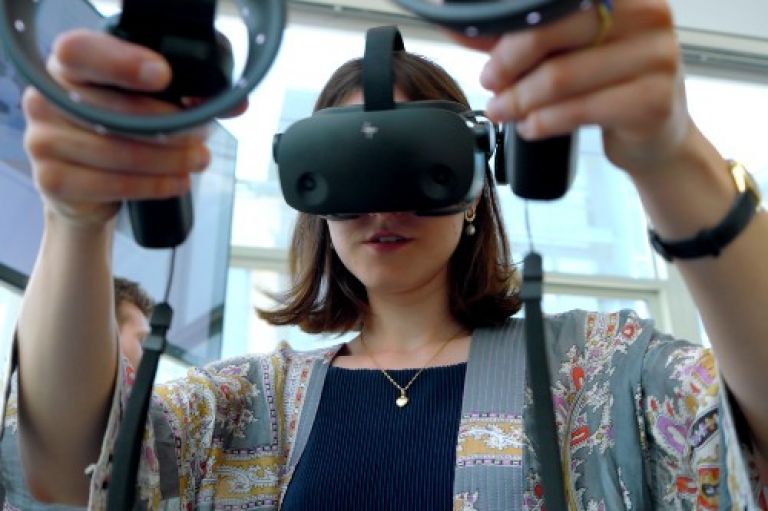Professor John Barbur has been awarded the Newton Medal for his exceptional contributions to the field of colour science
By Mr George Wigmore (Senior Communications Officer), Published
Professor John Barbur, Optics Chair in the School of Health & Psychological Sciences at City, University of London, has been awarded the Newton Medal by the Colour Group (Great Britain) for his exceptional contributions to the field of colour science.
The Newton Medal has been awarded every two years since 1963 by the Colour Group and it recognises fundamental research and practical applications in colour vision, which have impacted advanced scientific understanding, public health and society. The Colour Group was founded in 1940 by Professor W.D. Wright, who played an instrumental role in the field of colorimetry during his time at Imperial College London and was also the first recipient of this prestigious award.
Professor Barbur received the Medal and delivered his accompanying lecture, titled ‘Variability, colour thresholds and chromatic mechanisms’, in front of 160 colleagues and friends on Wednesday 21 February 2024, many of whom he had worked with throughout his long and distinguished career. Dr Marisa Rodriguez Carmona, Senior Lecturer in Optics at City and one of Professor Barbur’s colleagues, is also a member of the Colour Group and she helped organise this special event.
Leading colour vision expert
As a leader in the field of colour vision, Professor Barbur has a long record of research achievements and broader impact in fundamental vision science and applied and clinical research. To name but a few, his early work on camouflage led to insights into the processing of luminance and colour signals that led to an improved understanding of the properties of chromatic mechanisms with important applications in colour vision assessment within visually demanding occupations and in the clinic.
In addition, he has developed research instrumentation and measurement techniques to study mesopic vision, eye movements, visual search, motion and rapid flicker sensitivity, the function of the pupil response, ‘Blindsight’, the effects of scattered light on spatial vision, congenital and acquired colour deficiency, colour constancy and the measurement of stimulus-specific, cortical, visual processing times. Professor Barbur’s novel tests and instrumentation have led to new findings, and notable examples include the P_SCAN system and a number of Advanced Vision and Optometric Tests (AVOT). The latter include the Colour Assessment and Diagnosis (CAD) test, which is now used throughout the world to assess pilots, firefighters, train drivers, seafarers, police officers and air traffic controllers.
Other AVOT tests are also being used to detect changes in oculomotor responses in degenerative disorders of the brain and early-stage degenerative disorders of the retina, and to evaluate the outcome of eye-related treatments in clinical trials.

Colour assessment
In his lecture, Professor Barbur spoke about the advantages of colour vision, focusing on how either changes in, or the absence of, one chromatic mechanism can influence the effectiveness of the remaining vision channels and how this can affect our functional vision and the ability to carry out visual tasks, including those involved in tests of colour assessment. His focus was on understanding variability within congenital colour deficiency and the different ways colour deficient subjects can make use of other signals to compensate for the diminished or even for the total absence of red/green colour vision.
On receiving the Newton Medal, Professor Barbur said:
“The AVOT tests and the vision assessment protocols developed at City are now being used to reveal and quantify the severity of loss in congenital deficiency, to detect the earliest changes in functional vision caused by disease, and also to monitor effects of treatment in genetic clinical trials. The availability of AVOT tests worldwide also helps to demonstrate how our research findings have impacted both occupational vision and the clinic.”



